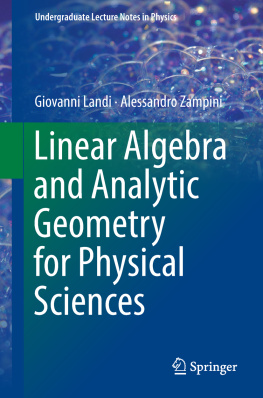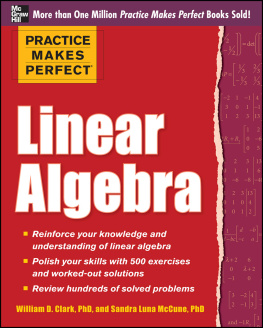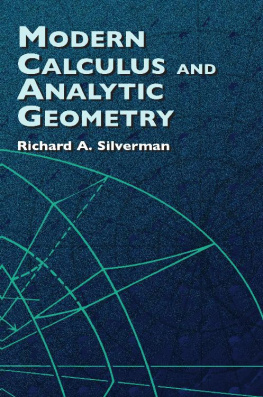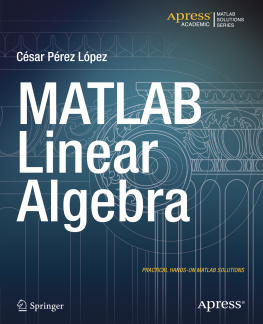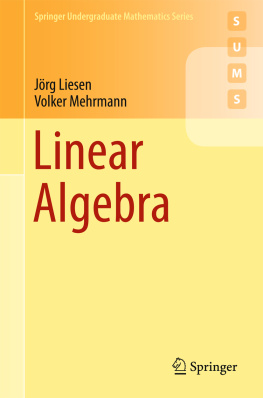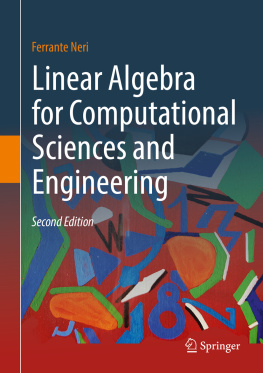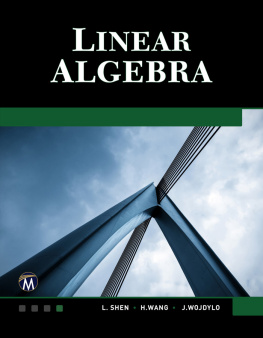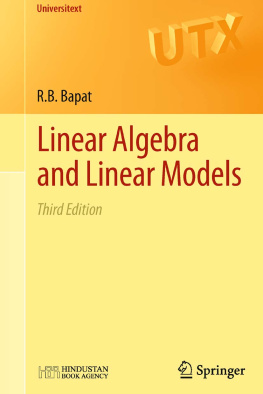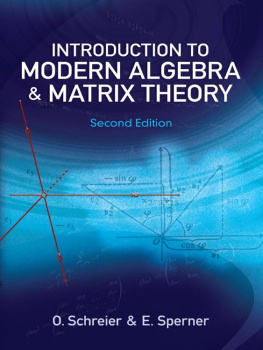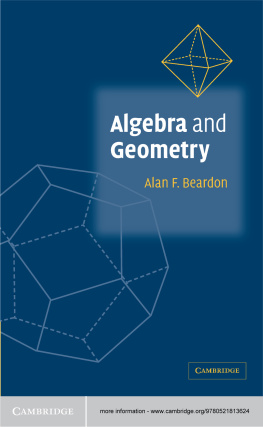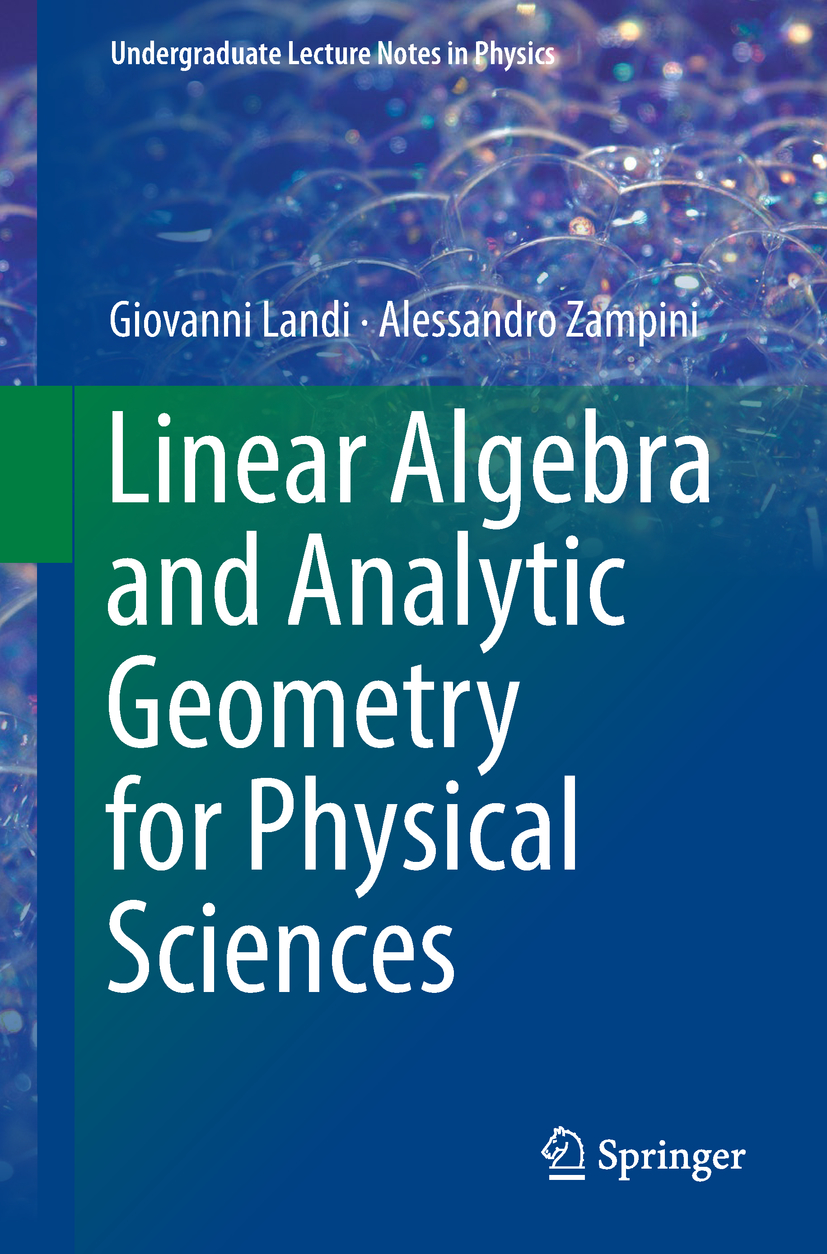Undergraduate Lecture Notes in Physics
Series Editors
Neil Ashby
390 UCB, University of Colorado, Boulder, Colorado, USA
William Brantley
Department of Physics, Furman University, Greenville, South Carolina, USA
Matthew Deady
Physics Program, Bard College, Annandale-on-Hudson, New York, USA
Michael Fowler
Dept of Physics, Univ of Virginia, Charlottesville, Virginia, USA
Morten Hjorth-Jensen
Dept. of Physics, University of Oslo, Oslo, Norway
Michael Inglis
Department of Physical Sciences, SUNY Suffolk County Community College, Selden, New York, USA
Undergraduate Lecture Notes in Physics (ULNP) publishes authoritative texts covering topics throughout pure and applied physics. Each title in the series is suitable as a basis for undergraduate instruction, typically containing practice problems, worked examples, chapter summaries, and suggestions for further reading.
ULNP titles must provide at least one of the following:
An exceptionally clear and concise treatment of a standard undergraduate subject.
A solid undergraduate-level introduction to a graduate, advanced, or non-standard subject.
A novel perspective or an unusual approach to teaching a subject.
ULNP especially encourages new, original, and idiosyncratic approaches to physics teaching at the undergraduate level.
The purpose of ULNP is to provide intriguing, absorbing books that will continue to be the readers preferred reference throughout their academic career.
Series editors
Neil Ashby
University of Colorado, Boulder, CO, USA
William Brantley
Department of Physics, Furman University, Greenville, SC, USA
Matthew Deady
Physics Program, Bard College, Annandale-on-Hudson, NY, USA
Michael Fowler
Department of Physics, University of Virginia, Charlottesville, VA, USA
Morten Hjorth-Jensen
Department of Physics, University of Oslo, Oslo, Norway
Michael Inglis
Department of Physical Sciences, SUNY Suffolk County Community College,Selden, NY, USA
More information about this series at http://www.springer.com/series/8917
Giovanni Landi and Alessandro Zampini
Linear Algebra and Analytic Geometry for Physical Sciences
Giovanni Landi
University of Trieste, Trieste, Italy
Alessandro Zampini
INFN Sezione di Napoli, Napoli, Italy
ISSN 2192-4791 e-ISSN 2192-4805
Undergraduate Lecture Notes in Physics
ISBN 978-3-319-78360-4 e-ISBN 978-3-319-78361-1
https://doi.org/10.1007/978-3-319-78361-1
Library of Congress Control Number: 2018935878
Springer International Publishing AG, part of Springer Nature 2018
This work is subject to copyright. All rights are reserved by the Publisher, whether the whole or part of the material is concerned, specifically the rights of translation, reprinting, reuse of illustrations, recitation, broadcasting, reproduction on microfilms or in any other physical way, and transmission or information storage and retrieval, electronic adaptation, computer software, or by similar or dissimilar methodology now known or hereafter developed.
The use of general descriptive names, registered names, trademarks, service marks, etc. in this publication does not imply, even in the absence of a specific statement, that such names are exempt from the relevant protective laws and regulations and therefore free for general use.
The publisher, the authors and the editors are safe to assume that the advice and information in this book are believed to be true and accurate at the date of publication. Neither the publisher nor the authors or the editors give a warranty, express or implied, with respect to the material contained herein or for any errors or omissions that may have been made. The publisher remains neutral with regard to jurisdictional claims in published maps and institutional affiliations.
This Springer imprint is published by the registered company Springer International Publishing AG part of Springer Nature
The registered company address is: Gewerbestrasse 11, 6330 Cham, Switzerland
To our families
Introduction
Giovanni Landi
Alessandro Zampini
This book originates from a collection of lecture notes that the first author prepared at the University of Trieste with Michela Brundu, over a span of fifteen years, together with the more recent one written by the second author. The notes were meant for undergraduate classes on linear algebra, geometry and more generally basic mathematical physics delivered to physics and engineering students, as well as mathematics students in Italy, Germany and Luxembourg.
The book is mainly intended to be a self-contained introduction to the theory of finite-dimensional vector spaces and linear transformations (matrices) with their spectral analysis both on Euclidean and Hermitian spaces, to affine Euclidean geometry as well as to quadratic forms and conic sections.
Many topics are introduced and motivated by examples, mostly from physics. They show how a definition is natural and how the main theorems and results are first of all plausible before a proof is given. Following this approach, the book presents a number of examples and exercises, which are meant as a central part in the development of the theory. They are all completely solved and intended both to guide the student to appreciate the relevant formal structures and to give in several cases a proof and a discussion, within a geometric formalism, of results from physics, notably from mechanics (including celestial) and electromagnetism.
Being the book intended mainly for students in physics and engineering, we tasked ourselves not to present the mathematical formalism per se . Although we decided, for clarity's sake of our readers, to organise the basics of the theory in the classical terms of definitions and the main results as theorems or propositions , we do often not follow the standard sequential form of definitiontheoremcorollaryexample and provided some two hundred and fifty solved problems given as exercises.
Chapter of the book presents the Euclidean space used in physics in terms of applied vectors with respect to orthonormal coordinate system, together with the operation of scalar, vector and mixed product. They are used both to describe the motion of a point mass and to introduce the notion of vector field with the most relevant differential operators acting upon them.
Chapters present, via a host of examples and exercises, the theory of finite rank matrices and their use to solve systems of linear equations.
These are followed by the theory of linear transformations in Chap. in terms of the Diracs Bra-Ket formalism, providing a link to a geometricalgebraic language used in quantum mechanics.
The notion of the diagonal action of an endomorphism or a matrix (the problem of diagonalisation and of reduction to the Jordan form) is central in this book, and it is introduced in Chap..
Again with many solved exercises and examples, Chap. ) how it allows one to characterise the rotations in classical mechanics. This is done by introducing the Euler angles which parameterise rotations of the physical three-dimensional space, the notion of angular velocity and by studying the motion of a rigid body with its inertia matrix, and formulating the description of the motion with respect to different inertial observers, also giving a characterisation of polar and axial vectors.

